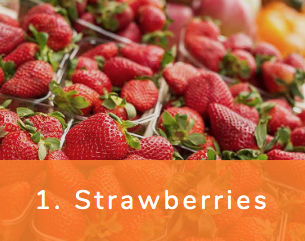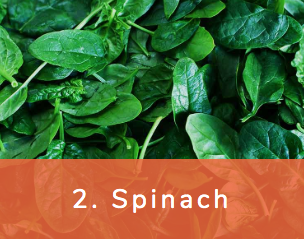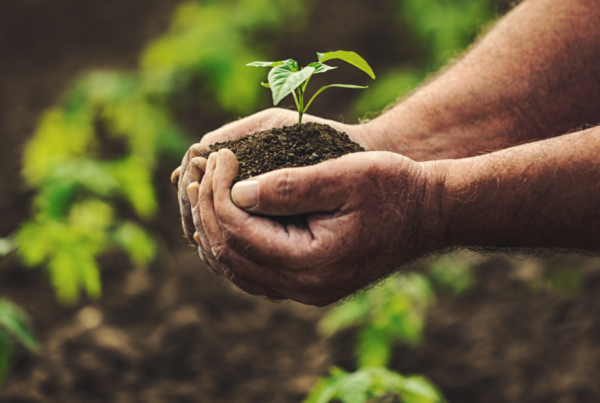Every year the Environmental Working Group (EWG) releases a Shopper’s Guide to Pesticides in Produce™, which ranks pesticide levels of 47 popular fruits and vegetables. The guide is based upon results of more than 40,900 samples of produce tested by the United States. Produce with the highest levels of pesticide contamination end up on the Dirty Dozen list while those with the lowest join the Clean Fifteen list.
© Environmental Working Group (EWG)
For the 2019 Dirty Dozen™ list, strawberries came in on top, followed by spinach, kale, nectarines, apples, grapes, peaches, cherries, pears, tomatoes, celery, potatoes. Hot peppers were also highlighted because they were found to be contaminated with insecticide toxic to the human nervous system. EWG reports that each of these foods tested positive for a number of different pesticide residues and contained higher concentrations of pesticides than other produce.
In comparison to 2018 findings, the 2019 Dirty Dozen list remained unchanged with one exception – kale is now considered to be the third most contaminated produce item. Rising from the eighth spot, this change is primarily due to more regular testing of the product as consumer demand and popularity for the leafy green increases.
Major Findings
- The tests found a total of 225 different pesticides and pesticide breakdown products on popular fruit and vegetables;
- More than 90% of samples of strawberries, apples, cherries, spinach, nectarines, and kale tested positive for residues of two or more pesticides;
- Spinach samples had, on average, 10 to 80% more pesticide residue by weight than any other crop;
- Kale has higher pesticide residues than nearly all other produce found in supermarket shelves – 92% of conventionally grown kale tested positive for residue from two or more pesticides, and some samples contained as many as 18 different pesticides;
- Avocados and sweet corn were the cleanest. Less than 1% of samples showed any detectable pesticides.
Pesticide Exposure
In a March press release issued by EWG, the American Academy of Pediatricians Council on Environmental Health emphasized that children’s exposure to pesticides should be limited as much as possible because it can, particularly during pregnancy and early childhood, increase the risk of leukemia, brain tumors, neurodevelopmental defects, and other adverse birth outcomes. Dr. Philip Landrigan, Director of the Global Public Health Program and the Global Observatory on Pollution and Health at the Schiller Institute for Integrated Science and Society at Boston College, says that, “even low levels of pesticide exposure can be harmful to children.” He says that “when possible, parents and caregivers should take steps to lower children’s exposure to pesticides while still feeding them diets rich in healthy fruits and vegetables.”
Want Fewer Pesticides? Eat Organic
EWG Research Analyst Carla Burns goes on to note that, “the main route of pesticide exposure for most Americans who do not live or work on or near farms is through their diet,” indicating that “studies have shown that eating fruits and vegetables free of pesticides benefit health, and this is especially important for pregnant women and children.”
Organic food is grown in harmony with nature, free of harmful chemicals. By rotating crops and selecting crop varieties with a natural resistance to particular pests and diseases, organic farmers are able to reduce or avoid disease problems and the need to control them with chemical inputs. IFOAM – Organics International recommends that consumers purchase organic produce whenever possible.
The Clean Fifteen
In 2019 samples, multiple pesticide residues were extremely rare on Clean Fifteen vegetables. And, happily, more than 70% of fruit and vegetable samples on the Clean Fifteen list had no pesticide residues! Only 6% of Clean Fifteen fruit and vegetable samples had two or more pesticides.
EWG’s 2019 Clean Fifteen list of produce least likely to contain pesticide residues included avocados, sweet corn, pineapples, frozen sweet peas, onions, papayas, eggplants (aubergines), asparagus, kiwis, cabbages, cauliflower, cantaloupes, broccoli, mushrooms, and honeydew melons. Relatively few pesticides were detected on these foods, and tests found low total concentrations of pesticide residues.
In the previous blog posts, you’ll find posts exploring extraordinary innovations, organic policies, scientific research and expert opinions on organic. Check them out!









